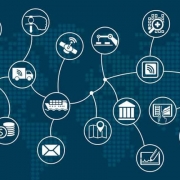4 Exciting New Trends in Gartner’s 2023 Emerging Technologies
Theme No. 1: Emergent AI
“These technologies provide opportunities for sustainable differentiation and greater workforce productivity. While generative AI has great potential to enable competitive differentiation, several other emerging AI techniques also offer immense potential to enhance digital customer experiences, make better business decisions and distinguish yourself among your competition. Other critical technologies in emergent AI include AI simulation, Causal AI, Federated machine learning, Graph data science (GDS), Neuro-symbolic AI, and Reinforcement learning (RL).”
Theme No. 2: Developer experience (DevX)
“The suite of technologies under this theme focuses on attracting and retaining top engineering talent by supporting interactions between developers and the tools, platforms, processes and people they work with. Value stream management platform (VSMP) is an example of DevX technology that seeks to optimize end-to-end product delivery and improve business outcomes. They connect to existing tools and ingest data from all phases of software product delivery — from customers’ needs to value delivery. VSMPs help software engineering leaders identify and quantify opportunities to improve software product performance by optimizing cost, operating models, technology and processes. Other critical technologies in developer experience include AI-augmented software engineering, API-centric SaaS, GitOps, Internal developer portals, and Open-source program office (OSPO).”
Theme No. 3: Pervasive cloud
“These technologies focus on how cloud computing will evolve and become an important driver of business innovation. They are reimagining the cloud at the edge, making it more vertically integrated and enabling industry-relevant solutions. Maximizing value from cloud investments will require automated operational scaling, access to cloud-native platform tools and adequate governance. Other critical technologies in pervasive cloud include Augmented FinOps, Cloud development environments (CDEs), Cloud sustainability, Cloud-native, Cloud-out to edge, and WebAssembly (Wasm).”
Theme No. 4: Human-centric security and privacy
“The technologies in this bucket focus on how organizations can become resilient by implementing human-centric security and privacy programs. They enable enterprises to create a culture of mutual trust and awareness of shared risks in decision making between many teams. AI trust, risk and security management (AI TRiSM) is a great example of human-centric security and privacy and ensures AI model governance, trustworthiness, fairness, reliability, robustness, efficacy and data protection. It includes solutions and techniques for model interpretability and explainability, data and content anomaly detection, AI data protection, model operations and adversarial attack resistance. Other critical technologies in human-centric security and privacy include Cybersecurity mesh architecture (CSMA), Generative cybersecurity AI, Homomorphic encryption (HE), and Postquantum cryptography (PQC).”


